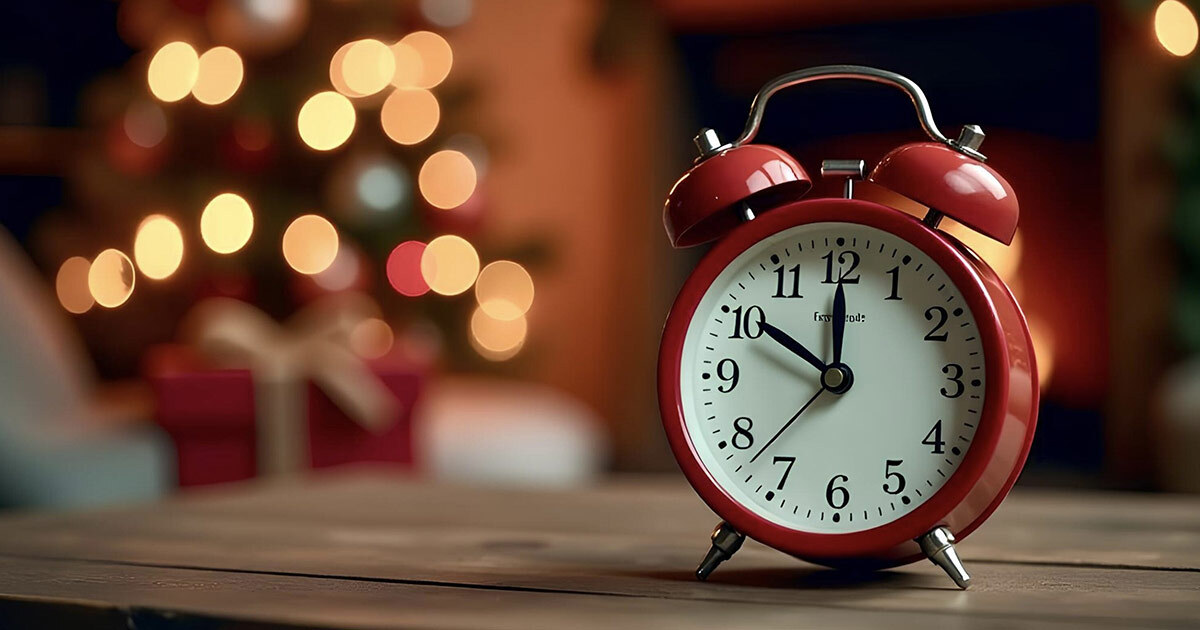Stem Cell Matrices that Adhere to Human Tissue
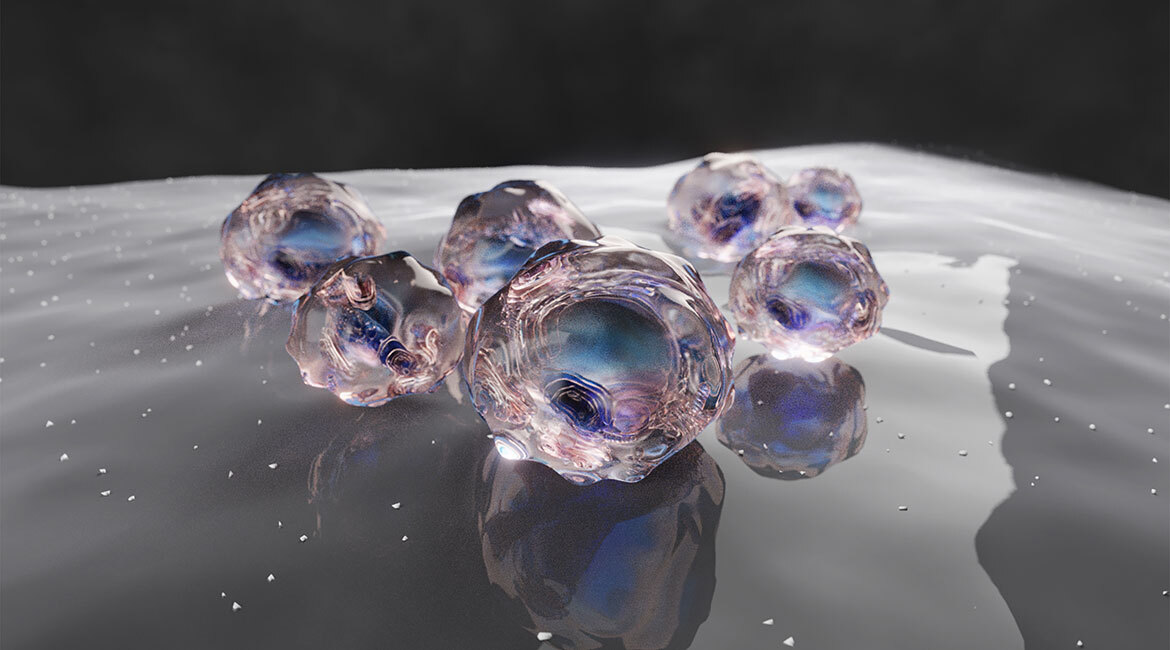
Purchased on Istockphoto.com. Copyright.
Inspired by the chemistry of mussels attached to marine sediments, ÉTS researchers are producing new injectable and adhesive biomaterials using chitosan, catechol, and sodium bicarbonate-based to design vehicles for cell therapy. By significantly reducing catechol oxidation, these matrices allow for cell survival while maintaining adequate mechanical properties that protect the cells during parenteral administration.
Cell Therapy
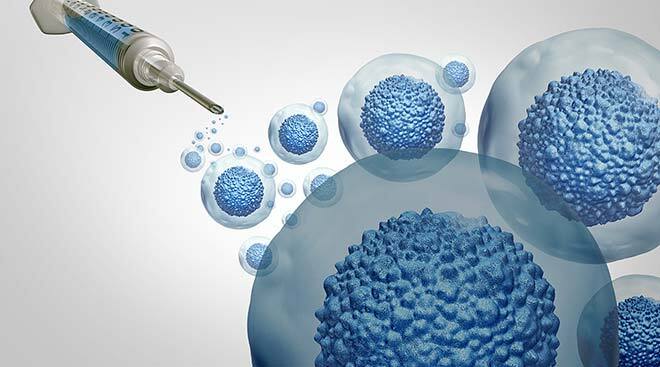
Cell therapy is an innovative treatment that differs from pharmacological treatments by using cells rather than drugs to induce a therapeutic effect. Stem cells—usually obtained from bone marrow or fat tissue—can be injected into the patient to help with rebuilding a tissue that has been permanently damaged. Due to the scarcity of these cells, they need to be grown in the lab before being reintroduced into the patient. Because stem cells are vulnerable and tend to disperse too quickly after entering the body, they often die off before reaching their therapeutic objective. Therefore, suitable vehicles have been designed to protect them during transportation and to provide them with favorable conditions to keep multiplying once they reach the target site. These vehicles must be injectable to allow for minimally invasive surgeries, mechanically strong to adequately protect cells from the forces of injection, biocompatible, and adhesive to human tissue to prevent them from detaching and migrating away from the target site.
Chitosan Gels
Chitosan is a polymer obtained by chemical treatment of the main element of crustacean shells, chitin. Chitosan can be combined with sodium bicarbonate to form a liquid solution at room temperature that gels at 37 °C, becoming a hydrogel. This viscoelastic matrix is highly hydrated and therefore highly adapted to cell survival [1]. Cells can be entrapped in these hydrogels by mixing them at room temperature in the liquid solution; upon gelation, the material hence forms a protective matrix around the cells. Unfortunately, the presence of water in the matrix makes inducing and maintaining adhesion much harder.
Catechol
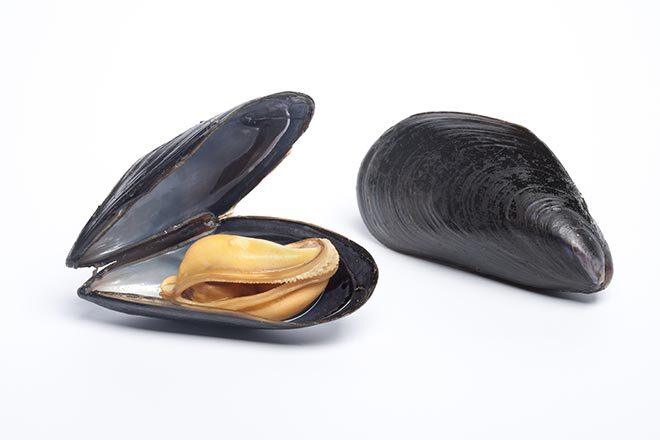
Blue mussels (Mytilus edulis) are known for their strong adhesion to marine sediments, despite their continuous immersion in water. In the 1980s, the protein analysis of their foot and filaments revealed the presence of high concentrations of a molecule called DOPA. This amino acid, which is also naturally occurring in some plants, contains catechol, a diphenol with exceptional adhesive properties [2]. Still, catechol bears a major disadvantage for biomedical applications, as its biocompatibility is limited by its tendency to spontaneously oxidize in basic environments (pH above 7). Once oxidized, catechol not only loses a large part of its adhesive properties, but this oxidation reaction generates free radicals which, in excessive amounts, attack the cell membranes and destroy them. As such, it is essential to find strategies to limit catechol oxidation at physiological pH (7.4).
Oxidation Reduction Strategies
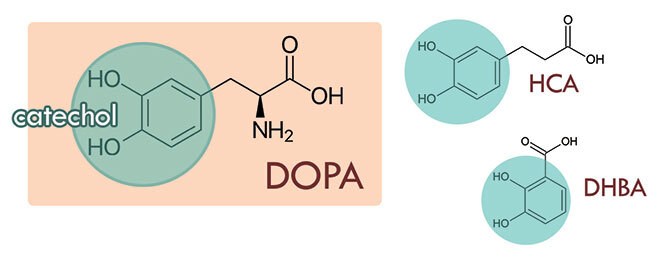
Apart from DOPA, various molecules containing catechol can be used to functionalize chitosan, increasing its adhesive properties even in the presence of water. Literature reviews show that until now, this functionalization was done by grafting hydrocaffeic acid (HCA); however, the resulting polymer (HCA-chitosan) is highly sensitive to oxidation and spontaneously oxidized when combined with sodium bicarbonate to produce a hydrogel [3]. Dihydrobenzoic acid (DHBA), thanks to its slightly different chemical structure, has a completely distinct electron cloud from HCA, making it much more resistant to oxidation [4]. For the first time, we showed that catechol can be added to chitosan by grafting DHBA instead of HCA to yield a highly adhesive polymer (DHBA-chitosan) that does not oxidize at physiological pH and remains stable during storage over extended periods of time.
Producing Injectable and Adhesive Hydrogels
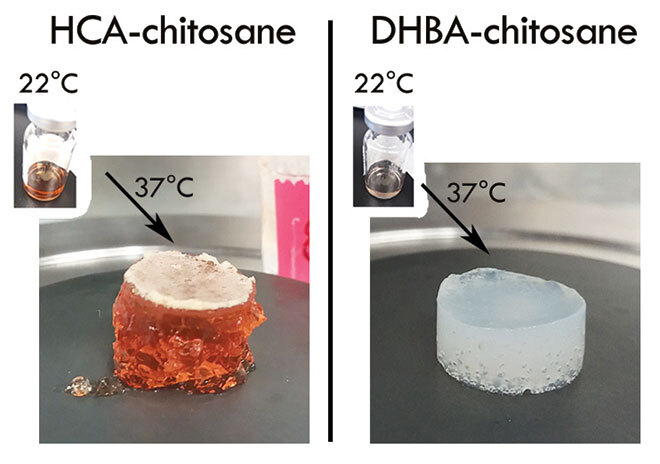
Hydrogels derived from the combination of DHBA-chitosan, sodium bicarbonate and phosphate buffer have shown very promising features. Upon reaching a physiological temperature (37 °C), they gel very quickly (under five minutes) and reach a relatively high rigidity – a crucial property to predict the adequate protection of the encapsulated cells. Unlike their HCA-chitosan counterparts, these hydrogels are much less oxidized; they also are more cohesive, gel faster, adhere way better to a large array of surfaces and, above all, are biocompatible. In particular, and , despite the presence of catechol, the survival of encapsulated cells in DHBA-chitosan hydrogels is comparable to that of unmodified chitosan hydrogels.
Conclusion
By using a novel catechol-containing molecule to functionalize chitosan, we were able to decrease catechol oxidation enough to produce adhesive and injectable hydrogels that are compatible with cell encapsulation. Eventually, these hydrogels could be locally injected into a patient to repair non-vascularized tissues or organs subject to high mechanical stress, such as scar tissue of the heart after a heart attack or damaged articular cartilage.
Additional Information
For more information on this research project, please refer to the following paper:
Guyot, C.; Adoungotchodo, A.; Taillades, W.; Cerruti, M.; Lerouge. S. 2021. A catechol-chitosan-based adhesive and injectable hydrogel resistant to oxidation and compatible with cell therapy. J. Mater. Chem. B, 2021,9, 8406-8416


